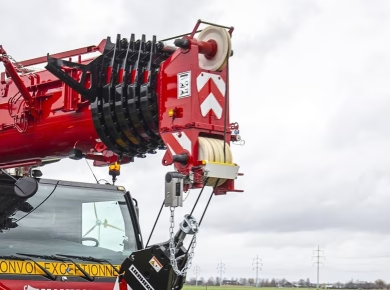When it comes to home improvement, choosing the right windows can significantly impact both aesthetics and energy efficiency. Among the leading window brands, Pella and Andersen stand out, each offering a range of products that cater to diverse needs and preferences. But which one truly comes out on top? In this article, we’ll delve into the strengths and weaknesses of both Pella and Andersen, helping you make an informed decision for your next home renovation project.
Understanding the Brands: Pella and Andersen
Pella has been a name in the window industry since 1925, known for its commitment to quality and innovation. Its windows are often praised for their stylish designs and energy-efficient features. With various materials like wood, fiberglass, and vinyl, Pella caters to a wide customer base looking for durability and aesthetic appeal.
Andersen, established in 1903, boasts a rich history and a reputation for producing high-quality windows. They are particularly noted for their Fibrex material, a composite that combines the benefits of wood and vinyl. Andersen’s range extends from traditional to contemporary styles, making it a popular choice among homeowners seeking versatility.
Product Lines and Options
Pella’s Offerings
Pella’s product lines are extensive, including the popular Pella 250 Series, which features vinyl windows that are both affordable and energy-efficient. For those looking for a more upscale appearance, the Pella Architect Series offers stunning wood windows with various finishes and styles. Their windows are customizable, allowing homeowners to choose from different grid patterns, colors, and hardware.
One of Pella’s standout features is its Smart Home Technology, which integrates window sensors and smart blinds. This innovation is appealing to tech-savvy homeowners who value automation and convenience.
Andersen’s Variety
Andersen provides a range of window styles, including the 100 Series, which uses Fibrex material for a sustainable yet durable option. Their 200 Series is known for its affordability without compromising quality, while the 400 Series represents their premium offering, with a wide variety of designs and energy-efficient options.
What sets Andersen apart is its focus on sustainability. The company emphasizes eco-friendly practices and materials, making it a go-to for environmentally conscious consumers.
Energy Efficiency: A Key Factor
Energy efficiency is often a primary consideration when selecting windows, and both Pella and Andersen deliver impressive options. Pella windows typically feature advanced insulating glass and low-E coatings, which help reduce heat transfer and improve energy savings. The Pella 250 Series, for instance, is certified by ENERGY STAR, making it an excellent choice for homeowners seeking to lower their utility bills.
Andersen also boasts energy-efficient products, with many of their windows meeting or exceeding ENERGY STAR guidelines. Their use of Fibrex material contributes to better insulation, and their Low-E glass options further enhance energy performance. Homeowners can feel confident that choosing Andersen will result in significant long-term savings.
Durability and Maintenance
Pella’s Durability
Pella windows are designed to withstand various weather conditions, thanks to their robust construction. Vinyl windows are resistant to warping, rotting, and fading, making them a low-maintenance choice. However, wood windows require regular upkeep to maintain their beauty and performance. Pella’s wood options come with a durable finish that helps protect them from the elements, but it’s essential to stay vigilant with maintenance.
Andersen’s Resilience
Andersen’s Fibrex material offers exceptional durability, combining the strength of wood with the low-maintenance characteristics of vinyl. This composite material resists fading, cracking, and peeling, providing homeowners with peace of mind. Additionally, Andersen’s wood windows come with a high-quality finish that protects against moisture and UV damage, reducing the frequency of maintenance required.
Cost Comparison: Pella vs. Andersen
When it comes to pricing, both brands offer products at various price points. Pella’s vinyl windows tend to be more budget-friendly, making them an excellent option for homeowners looking to maximize value without sacrificing quality. The Pella 250 Series, in particular, offers a solid balance of performance and affordability.
Andersen, while often considered a premium brand, provides a range of options that can fit different budgets. The 100 Series is competitively priced, appealing to those who want the benefits of Fibrex without breaking the bank. However, their higher-end models can be quite an investment, which may deter some budget-conscious consumers.
Installation and Warranty
The installation process is crucial when it comes to window performance. Both Pella and Andersen offer professional installation services, ensuring that their products are fitted correctly for optimal performance. Homeowners should always consult with certified installers to guarantee a proper fit and function.
In terms of warranties, both brands provide robust coverage. Pella typically offers a limited lifetime warranty on their windows, covering defects in materials and workmanship. Similarly, Andersen backs its products with a limited warranty, which varies by product line but generally includes coverage for the window frame and sash.
Customer Reviews and Satisfaction
Customer feedback can provide valuable insights when choosing between Pella and Andersen. Pella users often praise the brand for its aesthetic appeal and energy efficiency. Many appreciate the variety of styles and customization options available. However, some customers have noted that wood windows require more maintenance than expected, which can be a drawback for those seeking low upkeep.
Andersen customers frequently highlight the durability and energy efficiency of their windows. The Fibrex material receives high marks for its resilience and low maintenance. However, some users have reported that Andersen windows can be on the pricier side, which may limit accessibility for some homeowners.
Final Thoughts: Which Brand Should You Choose?
Choosing between Pella and Andersen ultimately comes down to your specific needs and preferences. If you value customization and a broader range of styles, Pella may be the better fit. Their innovative technology and affordability make them a strong contender, especially for those on a budget.
On the other hand, if you prioritize durability and sustainability, Andersen’s Fibrex material and commitment to eco-friendly practices could sway your decision. Their premium products offer lasting performance, although they may come at a higher price point.
In the end, both brands offer exceptional quality and value, making them reliable choices for window replacements. Consider your budget, style preferences, and energy efficiency needs as you weigh your options. With either Pella or Andersen, you can feel confident that you’re investing in windows that will enhance your home for years to come.
In the world of home renovation, informed decisions lead to satisfying results. So take your time, research, and perhaps even visit showrooms to see samples in person. After all, your windows are not just functional elements; they’re also a significant part of your home’s personality.



